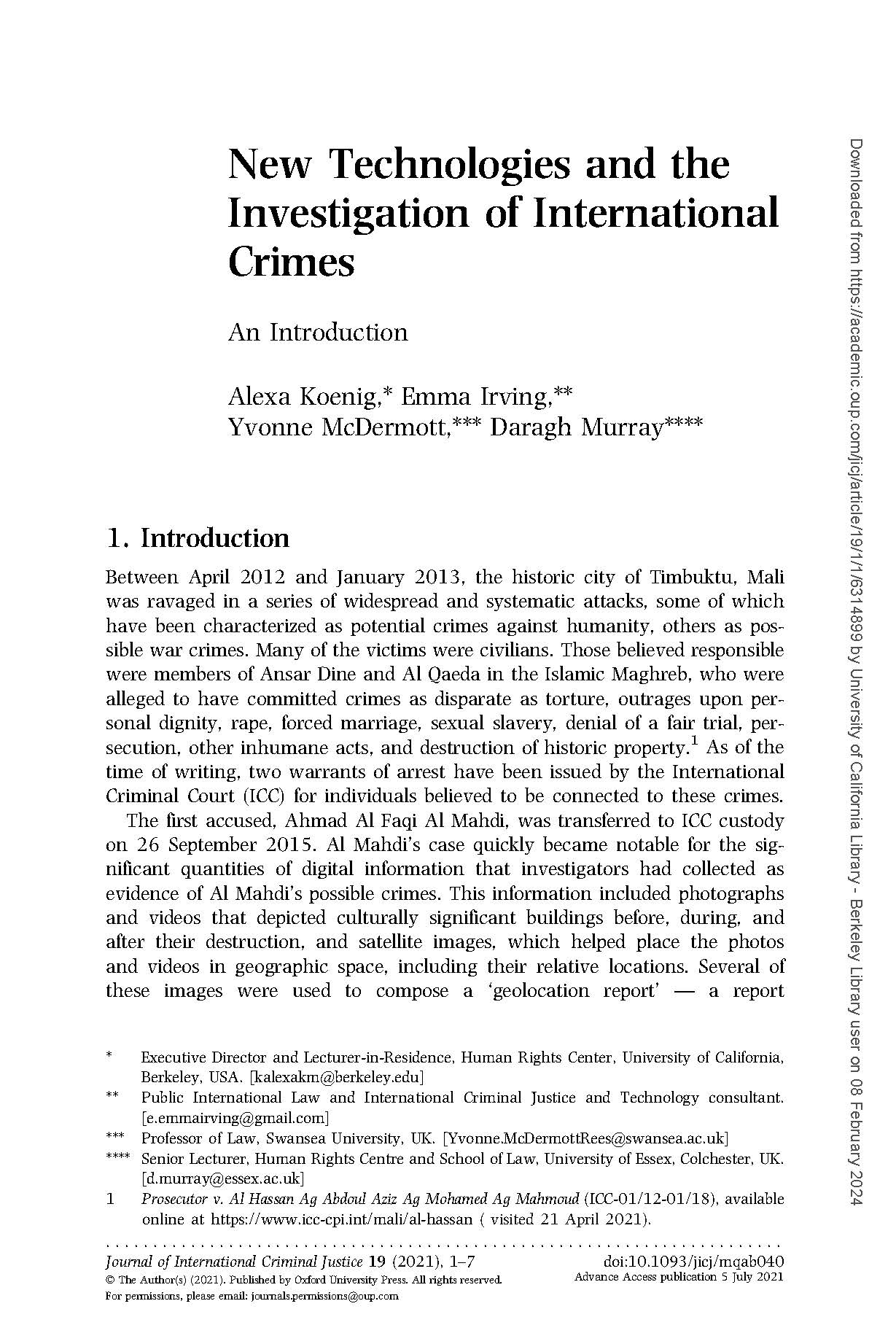New Technologies and the Investigation of International Crimes: An Introduction
Summary
New technologies stand to support a new era in the prosecution of international crimes. However, while digital methods — pulling videos from Facebook, creating timelines from tweets, aggregating disparate online information to help tell the who, what, when, where, and why underlying egregious events — hold tremendous promise, there are also noteworthy pitfalls. For example, digital information is notoriously unstable, with the most graphic content frequently removed by social media platforms before it can be preserved by investigators. How can new processes be devised, either among international criminal investigators or in partnership with outside actors, to ensure potential lead, linkage, and crime base evidence remain accessible for accountability? And then there is the scale problem: how can large datasets, whether on social media like YouTube, Facebook, Twitter, or Tencent, or in private archives being developed by non-profits, be efficiently combed for alleged crimes and relevant people? Are there ways to do so that are both efficient and effective, relying on algorithms to do at scale what humans cannot? And just as importantly, how can methods developed by journalists and other non-lawyers be adapted to the needs of courts — including satisfying relatively high standards of proof, preserving the chain of custody of online content, and identifying anonymous content creators to serve as potential witnesses?

